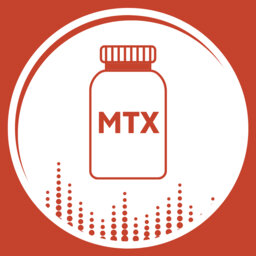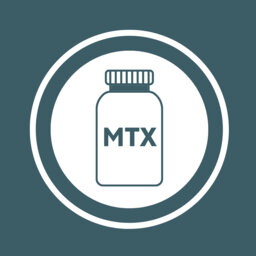The Next Step with Biosimilars
Patient PrepRheum Podcast
Patient PrepRheum is a podcast exploring important and often-misunderstood aspects of living with autoimmune arthritis and related conditions here in …In our premiere episode, we’ll be talking about biologic medicines and biosimilars. These are medicines that are used to slow or stop the progression of autoimmune arthritis and reduce disease activity when conventional tablet-form medications aren’t working well enough for you. We’ll hear from Ann Laherty-Hunt, a patient who was diagnosed with Rheumatoid Arthritis in 2012 and was a gym junkie before starting to notice sore joints and getting night sweats. Ann shares her treatment journey of trying various DMARD therapies before getting onto biosimilars, which have changed her life. Rheumatologist, Dr David Liew will help us understand the difference between biologics and biosimilars and the safety and efficacy standards that biosimilars must meet before becoming an approved medicine. He also explains the prescribing process of how patients can access biosimilars through the Pharmaceutical Benefits Scheme.
Dr David Liew Profile
David Liew is a rheumatologist and clinical pharmacologist at Austin Health in Melbourne and also leads the Medicines Optimisation Service there. He is also the deputy editor of Rheumatology Republic and a co-host of the Australian Prescriber Podcast.
Amongst other committee positions, he served on the Council of Australian Therapeutic Advisory Groups' Expert Advisory Group for the Guiding Principles for the Governance of Biologics and Their Biosimilars in Australian Hospitals and maintains an academic interest in adverse drug reaction surveillance.
HOST: Naomi Creek
PATIENT: Ann Laherty-Hunt
DOCTOR: Dr David Liew
When my Rheumatologist spoke to me she said, you’ve got the biologics that I’m sure you’ve heard of, she said but there’s also biosimilars, which are very similar to the biologic.
Welcome to Patient Prep Rheum, a podcast where we speak to people living with autoimmune arthritis and related conditions, as well as health professionals to fully understand important aspects of living with these conditions. We want to empower patients so they are prepped and ready to be at the centre of their own health and make their disease journey a smooth one.
Hi, I’m Naomi Creek, the National Coordinator for CreakyJoints Australia, and I have been managing Rheumatoid arthritis since I was 12 years old. The challenges I have faced have made me a passionate advocate for people living with chronic pain.
In this episode, we’ll be highlighting two of the main options used to slow or stop the progression of autoimmune arthritis and reduce disease activity when conventional tablet-form medications aren’t working well enough for you.
These options are biologics and biosimilars.”
Ann Laherty-Hunt is a nurse that lives in regional Victoria, and was diagnosed with Rheumatoid arthritis in 2012.
I was being a gym junkie, and my husband and I were going to the gym a lot, and I was getting sore thumb joints, and I went to a physio to get some strapping because I thought it was from overworking the joints, and then I was having night sweats and of course I'm going, well this isn’t right, and started looking into what it could be, and I was diagnosed with Rheumatoid arthritis in December 2012.
I started on, of course the bog standard methotrexate, so I was on that for a while and then I still didn’t have much control, so then we added in plaquenil, and it was still better but not great, and then eventually we added in the pyralin. With those three I probably got really good control for 18 months to two years.
After those two years, it looked as though Ann would go into remission, but then her condition spiralled. That is when Ann and her Rheumatologist started talking about another way to treat her condition that they hadn’t yet tried.
I knew there was the next step. She said you’ve got the biologics that I’m sure you’ve heard of, but there’s also biosimilars. She said it’s not quite the same as a biologic, because it’s a slightly different compound, but it has the same effect.
So what exactly are the scientific differences between a biologic and a biosimilar? Are they even that different? Rheumatologist and clinical pharmacologist, Dr. David Liew explains
There are a lot of medications we can just synthetically produce, and we make in a factory and just copy exactly, but some of the most important medicines in Rheumatology are bigger molecules, they’re monoclonal antibodies, just like other antibodies floating around our system.
They’re big complex biologic things that we just simply can’t copy exactly. Not only are they really big in terms of the coding that makes up them, but they do all sorts of things after they are coded, which means that they fold in different ways, and they get affected in different ways, and basically you can’t copy them exactly.
A biosimilar is the best attempt to try and be able to replicate that, making sure all of the important bits are replicated, making sure it works in the same way, but with the knowledge that we can never ever copy it.
By the time a biosimilar gets to you, the consumer, it’s gone through so much of a process to get there.
Not only does it have to have the same basic makeup, it has to go through the same laboratory tests to make sure it’s exactly the same in the way that it performs, but it has to go through processes in humans where it does exactly the same, not better, not worse, exactly the same.
This is something you can hand on heart, say, stacks up against the originator.
Ann’s rheumatologist discussed the medical differences between biologics and biosimilars, but there were a few other social factors that helped Ann make her decision between choosing a biologic or a biosimilar.
She also discussed that it’s cheaper for the Government as well because she said that’s why they’ve brought them out, because biologics are very expensive.
One thing I’ve noticed from a lot of the support groups online is that people really stress about getting their scripts to get their injections. Because I’m rural I was like I don’t want to have to be having that as an extra worry. So I spoke to her about that and she said the good thing about the biosimilars is that they don’t need to have the approval every couple of months.
Once you get it it’s like 3 months or a year or something, I don’t have to wait for medicare. Even though it’s an injection once a week, I thought I would go with the biosimilar. As long as it works I don’t really care if it’s a biologic or a biosimilar.
This process that Ann speaks about is known as streamlined authority. This isn’t available for all biologics and biosimilars, it also doesn’t replace her appointments with her rheumatologist, however it dramatically cuts down her approval time to receive the medication.
Streamlined authority makes the process for both the patient and the doctor, much simpler.
That’s that process where every six months on the PB, I or the treating rheumatologist has to sit down with whoever the patient is, and go through and fill out some paperwork, scan it into the system, send it off electronically, wait for someone to manually review it, and then send it back. That’s an arduous process for everyone.
That’s only there because of the cost effectiveness and variance. We need to make sure that the patients who are getting it, are the ones who are benefitting from it.
But patients who are going on biosimilars now, get to the process where after the first time it works, they can get a streamlined approval. Which means they leave the rheumatologists office, with a prescription in hand with a streamlined code on it, which is good to go, so they never have to do that waiting.
Having lived for so many years with chronic pain and ongoing symptoms, Ann said it was an easy decision to try a new medicine with such promise. The rheumatologist confirmed Ann’s eligibility for being prescribed a biosimilar for her rheumatoid arthritis after confirming that enough of her joints were affected by this condition.
That is a threshold that is set by the Government, which is the same for any biologic, *for rheumatoid arthritis* whether it’s the originator or the biosimilar for rheumatoid arthritis after biologic. Basically the Government wants to see that there’s at least 20 joints affected, or it could be four large joints, like knees or shoulders. That’s a process that applies for normal biologics or biosimilars, and that's really just about making sure that we are using these medications in the patients that are going to benefit the most.
It was a long and painful process for Ann to finally be prescribed a biosimilar over oral medication. She made the switch 12 months ago and noticed a difference within months.
The change in my condition has been amazing. The main thing it got rid of was my fatigue, my fatigue is gone. That was the most crippling part of my disease, I felt.
Within about 2 or 3 months I noticed I wasn’t fatigued anymore. The pain has reduced of course, but the pain you can take a tablet for, the fatigue you can’t do anything for, so I’m wrapped that that’s been the biggest change, for me is just not being tired, for no reason, all the time, and then not being able to sleep. It’s been life changing in that regard.
As for Rheumatologist and Chemical Pharmacologist, Dr David Liew, biosimilars are a treatment that he actively prescribes for patients who require it.
I trust biosimilars, I’d happily take a biosimilar and I’d happily change my patients from originators to biosimilars when appropriate.
Although Ann has had an uphill battle since her diagnosis with Rheumatoid Arthritis, she worked with her Rheumatologist to find the right treatment for her.
If you want to learn more about biosimilars, listen to our audio guide or find more information at creaky joints.org.au.
If you are considering how or if biosimilars fit into your treatment plan, speak to your rheumatologist.
Thanks for listening to this episode of Patient Prep Rheum.
 Patient PrepRheum
Patient PrepRheum


